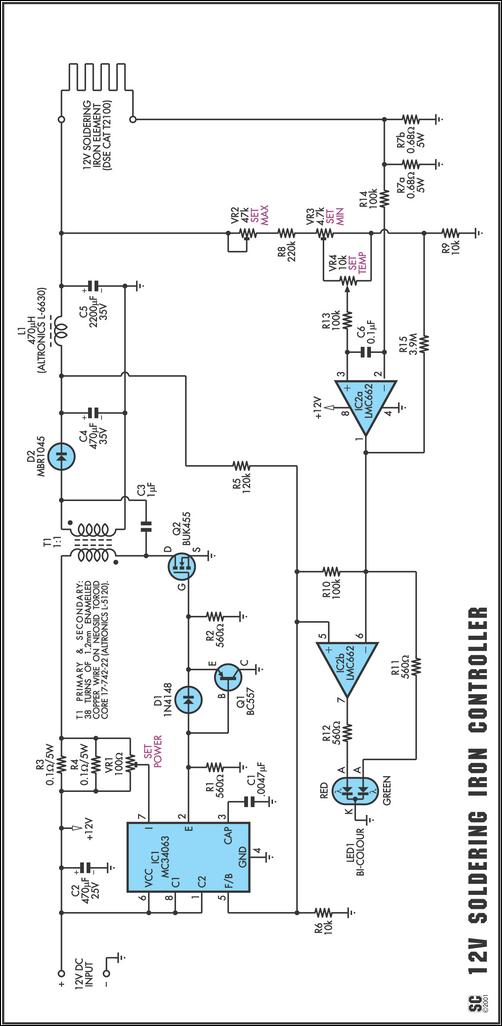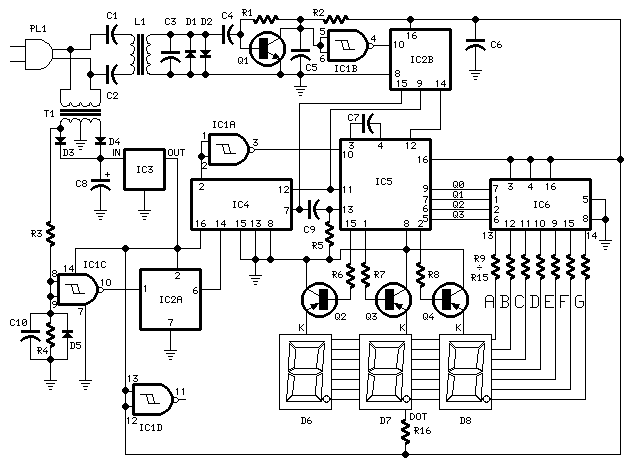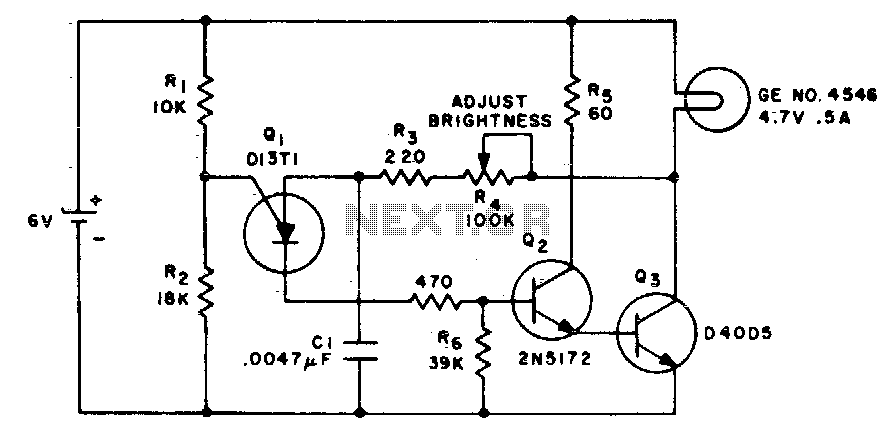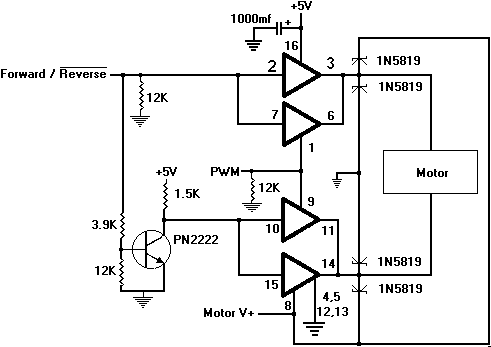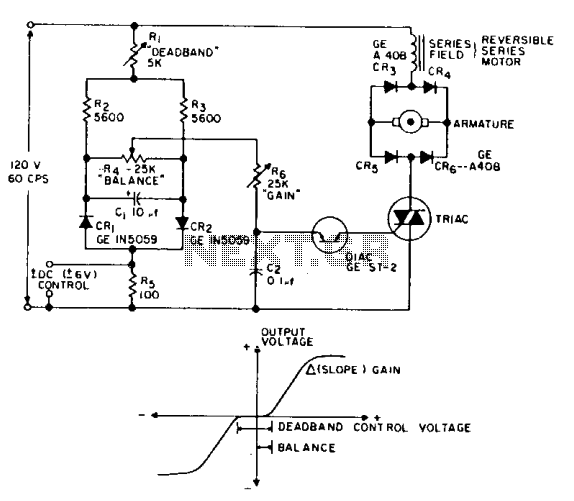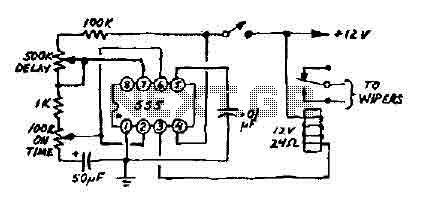
Remote Control Operator
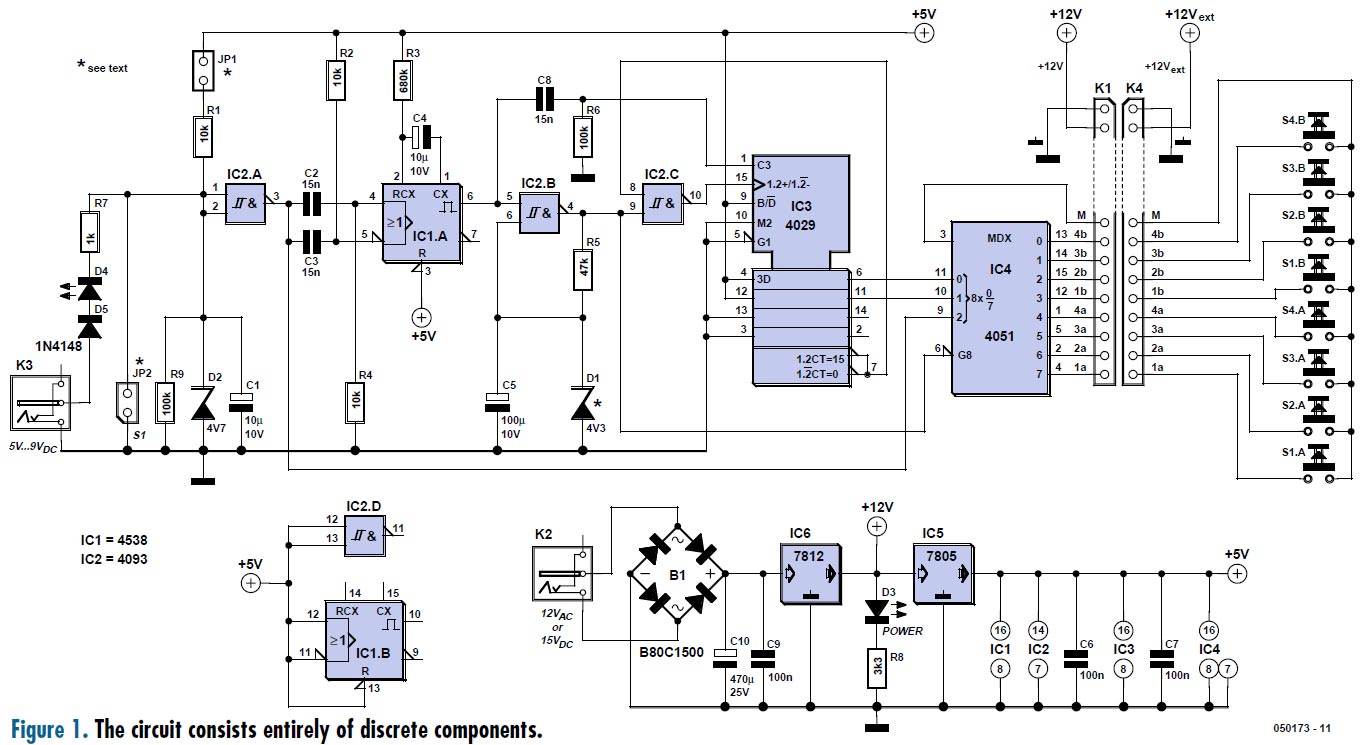
Remote-controlled light switches are increasingly popular. DIY stores offer affordable sets that include multiple light switches and a remote control unit, allowing users to manage lighting from their armchairs. However, controlling the lighting while away from home can be a challenge, especially as a deterrent for burglars. This circuit addresses that issue. Often, when people go on holiday, they connect standard lights to timers to simulate occupancy. This can be useful for signaling guests that it's time to leave. Unfortunately, when using wireless remote-controlled lights, the ability to utilize a timer is lost, as these lights rely on signals transmitted via radio or infrared. This raises the question of who can manage the remote control in the owner's absence, as it is unreasonable to expect neighbors to do so. Fortunately, with some creativity and electronics, this problem can be circumvented. This circuit allows for the addition of electronic switches in parallel with the buttons on the remote control, provided the remote is suitable for modification. The design accommodates a maximum of four lights, with each light requiring an on and off switch. The receivers are activated by sequentially closing the on contacts, with a brief pause between each, and similarly for the off contacts. The circuit avoids the use of a microcontroller, utilizing easily obtainable and inexpensive components instead. Initially, the plan was to control the circuit via a standard switch or a switch inside a timer, but this approach proved complicated and safety regulations needed to be adhered to. A simpler solution involves using a voltage from a separate mains adapter, which can usually be sourced from old devices (5 V to 9 V DC). This method enhances safety, as the adapter can plug directly into the timer. The timer is set for the desired on and off times, while the mains adapter provides a control signal to the circuit. For low voltage applications, a switch can still control the circuit, connected to JP2, with a jumper on JP1. The switch or adapter sends a logic high level to NAND IC2a, and the combination of capacitors and resistors generates a pulse to the monostable multivibrator IC1a with each input level change. The output of IC1a keeps the Q output high long enough for NAND-gate IC2b to produce four pulses. The duration of these pulses determines how long the remote control switches are activated, influenced by the values of R5 and C5. The preset input of the 4-bit down-counter (IC3) receives a preset pulse from the Q output, allowing it to process four pulses before stopping until the input state changes. The logic level on pin 3 of IC2a controls which part of the analog switch IC4 is active, enabling only the first four switches with a low level at pin 9, and the last four switches with a high level. The enable input of IC4 is active low, momentarily activated by NAND IC2b, ensuring distinct gaps between electronic key presses. Due to component tolerances, the last switch may be activated twice, but this typically does not cause issues, as the light remains on. Adjustments can be made to the RC time of IC1a by reducing R3's value if necessary. To maintain compactness, an external mains adapter rated at 12 V AC or 15 V DC connects to K2. There is also a 12 V output via K1 for powering the remote control unit, necessitating the removal of batteries before connecting. If the remote control operates at a different voltage, IC6 can be replaced with one that outputs the correct voltage. This circuit is designed for specific remote control types, where one side of the switches connects to a common track. For compatibility, eight plus one wires for the switches and two supply wires connect to K4, with careful soldering to the switch contacts required. Testing should confirm correct connections before integrating K4 with the circuit. The construction process should be straightforward, beginning with wire links, including those beneath the ICs. An enclosure is suggested to maintain a compact design, with voltage regulators positioned close to the board to minimize height. Modifying mounting holes to an oval shape may facilitate assembly.Remote controlled light switches are becoming more and more common. DIY stores have inexpensive sets consisting of several light switches and a remote control unit. It`s then easy to control everything from your armchair. But how can you control the lighting when you`re away, as a deterrent to burglars With the help of this little circuit that is no longer a problem. With modern technology it sometimes happens that you replace one problem with another. Or as Johan Cruyff, the greatest Dutch soccer player of all times eloquently said: every advantage have its disadvantage . The circuit described here has been designed to overcome a shortcoming of wireless remote controls for domestic lighting.
The problem is this: when people go way on holiday they often connect ordinary lights directly to time switches to turn the lights on and off at certain times. This gives the impression that the house is still occupied, but it can also come in useful when visitors, who stay till the small hours of the night, need a little hint that it`s time to go!
But when these lights are controlled wirelessly it is unfortunately no longer possible to switch them on and off with a time switch. The light switches work with a signal that is transmitted via radio or infrared by the remote control handset.
And herein lies the problem: who controls the remote control in your absence You can`t expect your neighbours to do this for you, even if you get on very well with them. Fortunately, with a little inventiveness and some electronics we can get round this problem. With this circuit we can add electronic switches in parallel with the buttons in the remote control. Of course your remote control has to be suitable for this modification. This will be covered in detail later, in the section Modifying the remote control . To keep things simple, we have catered for a maximum of four lights. The remote control unit we bought had one on-switch and one off-switch for each light. For four lights we therefore need to control eight switches externally. The receivers are turned on by closing the four on` contacts equentially, with a short pause in between.
They are turned off again by closing the four off` contacts sequentially, with a short pause in between. As you can see from Figure 1, this time we found a solution without the use of a microcontroller. It does mean that a fair number of components are used in the circuit, but they are all without exception easily obtainable and inexpensive.
In the original design we wanted to control this circuit via an ordinary switch or the switch inside a time switch. This means that we would first have to open up the time switch to disconnect the internal microswitch from the mains.
Apart from the fact that this involves a lot of tinkering, it is not always possible. We would also have to make sure that all safety regulations were adhered to! It is much simpler to control the circuit with a voltage and use a separate mains adapter; you probably have one left over from an old mobile phone or other device (5 V to 9 V DC). This also keeps everything safe, since the adapter simply plugs into the time switch! You then set the time switch to the required times when the lights should go on and off, and the mains adapter provides a control signal to the circuit.
For other (low voltage) applications the facility is still there to control the circuit with a switch. This should be connected to JP2. In this case you should remember to put a jumper onto JP1. The switch or adapter puts a logic high level at the input of NAND IC2a. The combination of C3/R2 and C2/R4 feed a positive or negative edge to monostable multivibrator IC1a every time the input level changes.
The RC network of R3 and C4 keeps the Q output of IC1a (pin 6) high for long enough for NAND-gate IC2b to generate four pulses. The length of these four pulses determines how long the contacts of the switches in the remote control are closed and it depends on the values of R5/C5.
At the same time, the preset input of the 4-bit down-counter (IC3) receives a preset pulse from the Q output. During the time that the Q output is high, IC3 receives four pulses and then stops until the state of the input to the circuit changes.
The logic level on pin 3 of IC2a determines which part of analogue switch IC4 is active. In this way only the first four switches are active when there is a low level at pin 9 of this analogue switch, whereas the last four switches are active when there is a high level at pin 9. The enable input (pin 6) of IC4 is active low and is made high for a short period by NAND IC2b. This ensures that there are distinct gaps between each of the (electronic) key presses. Due to the tolerances of the RC networks it is possible for the last switch to be pressed twice. In principle this doesn`t really matter, since turning a light on twice still leaves it on! If you find this a problem, you can fix it by reducing the RC time of IC1a a little bit by lowering the value of R3.
To keep the circuit as compact as possible we`ve used an external mains adapter rated at 12 V AC or 15 V DC, which connects to K2. For completeness there is also a 12 V output via K1 (pin 1 is ground and pin 2 is +12 V), which can be used to supply the remote control unit.
In this case you must make sure that the batteries are removed before you connect the circuit! If your remote control doesn`t work at 12 V, then all you need to do is to replace IC6 with one that outputs the correct voltage. As we mentioned earlier, this circuit was designed for use with a specific type of remote control. This circuit will only work with types where one side of the switches is connected to one common track (and the other side of the switches is connected to separate parts of the circuit).
If your remote control unit is the same, you should solder eight plus one wires for the switches and two wires for the supply to connector K4. Then solder the wires to the contacts of the switches. Before connecting this to the circuit you should test that you soldered all wires correctly to the remote control.
Short pin 3 (M) of K4 with one of the other pins (1a to 4b) of K4. The remote control should then function just as if you pressed the corresponding key. If it all went satisfactorily you can connect K4 to K1. Don`t forget to remove the battery if you use the circuit to provide a power supply to the remote control! The construction shouldn`t give rise to any problems. In any case, always start with the wire links (including those underneath the ICs). During the design we had a particular enclosure in mind (see parts list). If you 10/2005 - elektor electronics 57 use the same enclosure you should mount the voltage regulators as close to the board as possible, in order to keep the height to a minimum.
It may help if you change the mounting holes to an oval shape with the help of a 1 mm drill. Ccontrol! 🔗 External reference
The problem is this: when people go way on holiday they often connect ordinary lights directly to time switches to turn the lights on and off at certain times. This gives the impression that the house is still occupied, but it can also come in useful when visitors, who stay till the small hours of the night, need a little hint that it`s time to go!
But when these lights are controlled wirelessly it is unfortunately no longer possible to switch them on and off with a time switch. The light switches work with a signal that is transmitted via radio or infrared by the remote control handset.
And herein lies the problem: who controls the remote control in your absence You can`t expect your neighbours to do this for you, even if you get on very well with them. Fortunately, with a little inventiveness and some electronics we can get round this problem. With this circuit we can add electronic switches in parallel with the buttons in the remote control. Of course your remote control has to be suitable for this modification. This will be covered in detail later, in the section Modifying the remote control . To keep things simple, we have catered for a maximum of four lights. The remote control unit we bought had one on-switch and one off-switch for each light. For four lights we therefore need to control eight switches externally. The receivers are turned on by closing the four on` contacts equentially, with a short pause in between.
They are turned off again by closing the four off` contacts sequentially, with a short pause in between. As you can see from Figure 1, this time we found a solution without the use of a microcontroller. It does mean that a fair number of components are used in the circuit, but they are all without exception easily obtainable and inexpensive.
In the original design we wanted to control this circuit via an ordinary switch or the switch inside a time switch. This means that we would first have to open up the time switch to disconnect the internal microswitch from the mains.
Apart from the fact that this involves a lot of tinkering, it is not always possible. We would also have to make sure that all safety regulations were adhered to! It is much simpler to control the circuit with a voltage and use a separate mains adapter; you probably have one left over from an old mobile phone or other device (5 V to 9 V DC). This also keeps everything safe, since the adapter simply plugs into the time switch! You then set the time switch to the required times when the lights should go on and off, and the mains adapter provides a control signal to the circuit.
For other (low voltage) applications the facility is still there to control the circuit with a switch. This should be connected to JP2. In this case you should remember to put a jumper onto JP1. The switch or adapter puts a logic high level at the input of NAND IC2a. The combination of C3/R2 and C2/R4 feed a positive or negative edge to monostable multivibrator IC1a every time the input level changes.
The RC network of R3 and C4 keeps the Q output of IC1a (pin 6) high for long enough for NAND-gate IC2b to generate four pulses. The length of these four pulses determines how long the contacts of the switches in the remote control are closed and it depends on the values of R5/C5.
At the same time, the preset input of the 4-bit down-counter (IC3) receives a preset pulse from the Q output. During the time that the Q output is high, IC3 receives four pulses and then stops until the state of the input to the circuit changes.
The logic level on pin 3 of IC2a determines which part of analogue switch IC4 is active. In this way only the first four switches are active when there is a low level at pin 9 of this analogue switch, whereas the last four switches are active when there is a high level at pin 9. The enable input (pin 6) of IC4 is active low and is made high for a short period by NAND IC2b. This ensures that there are distinct gaps between each of the (electronic) key presses. Due to the tolerances of the RC networks it is possible for the last switch to be pressed twice. In principle this doesn`t really matter, since turning a light on twice still leaves it on! If you find this a problem, you can fix it by reducing the RC time of IC1a a little bit by lowering the value of R3.
To keep the circuit as compact as possible we`ve used an external mains adapter rated at 12 V AC or 15 V DC, which connects to K2. For completeness there is also a 12 V output via K1 (pin 1 is ground and pin 2 is +12 V), which can be used to supply the remote control unit.
In this case you must make sure that the batteries are removed before you connect the circuit! If your remote control doesn`t work at 12 V, then all you need to do is to replace IC6 with one that outputs the correct voltage. As we mentioned earlier, this circuit was designed for use with a specific type of remote control. This circuit will only work with types where one side of the switches is connected to one common track (and the other side of the switches is connected to separate parts of the circuit).
If your remote control unit is the same, you should solder eight plus one wires for the switches and two wires for the supply to connector K4. Then solder the wires to the contacts of the switches. Before connecting this to the circuit you should test that you soldered all wires correctly to the remote control.
Short pin 3 (M) of K4 with one of the other pins (1a to 4b) of K4. The remote control should then function just as if you pressed the corresponding key. If it all went satisfactorily you can connect K4 to K1. Don`t forget to remove the battery if you use the circuit to provide a power supply to the remote control! The construction shouldn`t give rise to any problems. In any case, always start with the wire links (including those underneath the ICs). During the design we had a particular enclosure in mind (see parts list). If you 10/2005 - elektor electronics 57 use the same enclosure you should mount the voltage regulators as close to the board as possible, in order to keep the height to a minimum.
It may help if you change the mounting holes to an oval shape with the help of a 1 mm drill. Ccontrol! 🔗 External reference
